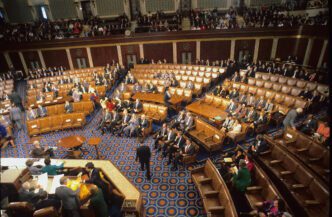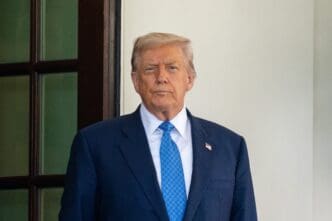Executive Summary
The Story So Far
Why This Matters
Who Thinks What?
Former FBI Director James Comey has been indicted on two counts of lying under oath by an Alexandria, Virginia, grand jury, marking a significant escalation in President Donald Trump’s efforts to use the Justice Department to target political opponents. The indictment, which rejected a third charge of obstruction of justice, followed seven tumultuous days within the Justice Department and the Eastern District of Virginia’s US attorney’s office, which saw three different officials in charge during the week.
Indictment and Political Context
The charges were presented by Lindsey Halligan, President Trump’s former personal lawyer, who had been in her US attorney role for just four days. This move signals a notable shift from Trump’s first term, where senior Justice Department leaders and White House officials often resisted presidential pressure regarding investigations.
Trump has consistently pushed for the prosecution of Comey and other perceived political adversaries, including New York Attorney General Letitia James and Senator Adam Schiff. He also directed the Justice Department to investigate liberal groups, specifically naming George Soros.
Background to the Charges
Comey’s 2017 firing by Trump led to the appointment of special counsel Robert Mueller, who investigated potential connections between Trump’s campaign and Russia, as well as possible obstruction of justice. A crucial element of Mueller’s probe was a 2017 dinner where Trump reportedly asked Comey to drop an investigation into Michael Flynn.
The charges against Comey are centered on his testimony before the Senate Judiciary Committee, where he denied authorizing leaks about FBI investigations. A critical factor in the timing of the indictment was the impending expiration of the five-year statute of limitations on Comey’s congressional testimony, set for Tuesday.
DOJ Turmoil and Appointments
The week leading to the indictment was characterized by internal turmoil. US Attorney Erik Siebert, who reportedly resisted pressure to pursue Trump’s enemies like Letitia James, announced his resignation, which Trump claimed was a firing. Despite reservations from other attorneys, Trump appointed loyalist Lindsey Halligan as interim US attorney, who then underwent an expedited briefing with DOJ attorneys and FBI officials.
Attorney General Pam Bondi expressed concerns internally but publicly supported the indictment. Meanwhile, Comey issued a social media statement vowing to fight the charges.
Grand Jury Proceedings
The grand jury proceedings themselves were described as unusual, including the rejection of one false statement charge, confusion over documents, and the resignation of a prosecutor. Notably, Comey’s son-in-law, also a prosecutor in the same office, resigned during this period.
Key Developments
The indictment of James Comey underscores the ongoing tensions between political leadership and the Justice Department, particularly concerning investigations into figures perceived as political opponents. The rapid personnel changes and the unusual nature of the grand jury proceedings highlight the extraordinary circumstances surrounding this high-profile case.








